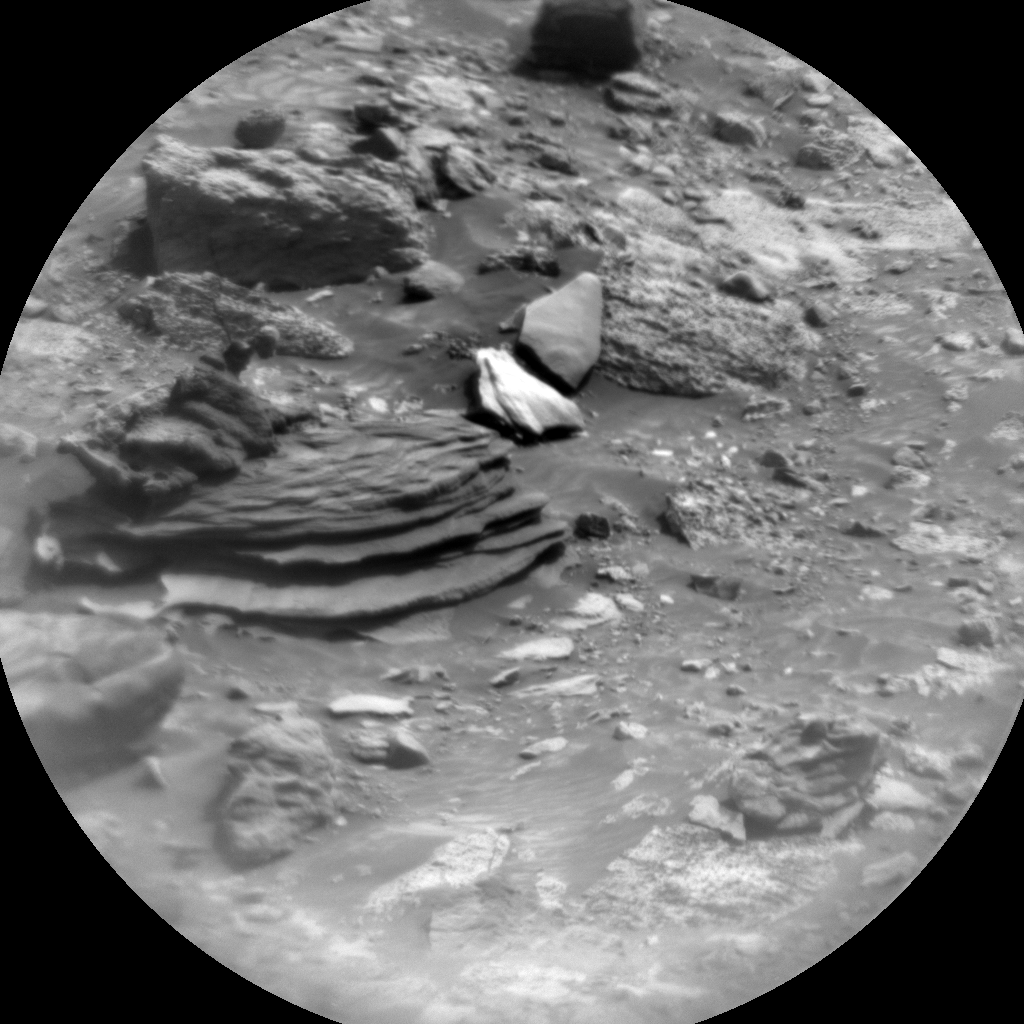Chemistry Experiments and Rover Stability on Mars
In a fascinating development on Mars, chemistry plays a pivotal role in the ongoing mission. The rover, currently exploring the Martian surface, is confirmed to be stable on its wheels. This stability is crucial as it allows scientists to extend the rover’s arm and conduct an APXS (Alpha Particle X-Ray Spectrometer) measurement on a particular area known as "Midnight Lake." The APXS instrument is used to determine the elemental composition of Martian rocks and soil, giving scientists valuable data about the planet’s geology.
The rover’s stability also enables the deployment of the MAHLI (Mars Hand Lens Imager), which captures high-resolution images of the target area. Additionally, the LIBS (Laser-Induced Breakdown Spectroscopy) investigations are conducted to complement the APXS analysis on Midnight Lake. LIBS uses laser technology to vaporize a small portion of the sample and analyze the light emitted to identify its elemental makeup. This provides a more comprehensive understanding of the Martian terrain.
Advanced Target Selection and Power Management
On the third sol (a Martian day), the rover employs an autonomous targeting system known as AEGIS (Autonomous Exploration for Gathering Increased Science). This system allows the rover to select its own target for LIBS measurement without human intervention. This capability is vital for maximizing scientific output, as it allows the rover to make decisions based on its immediate environment, even before scientists on Earth can analyze the images.
However, power management is a critical consideration during these operations. The CheMin (Chemistry and Mineralogy) team is busy performing housekeeping tasks, particularly examining empty cells to prepare for upcoming drilling activities. CheMin is responsible for identifying and quantifying the minerals in Martian rocks and soil, providing insights into the planet’s past environmental conditions.
Atmospheric and Subsurface Monitoring
The mission’s atmospheric team is actively engaged in monitoring Martian weather conditions. They conduct numerous investigations to detect dust devils (small, swirling columns of dust) and assess the dustiness of the atmosphere. The APXS instrument also measures the argon content in the atmosphere. Argon is an inert gas, meaning it does not react with other atmospheric components. By measuring argon levels, scientists can track seasonal changes in the atmosphere, as its concentration is influenced by temperature variations, particularly at the planet’s poles.
Meanwhile, the DAN (Dynamic Albedo of Neutrons) instrument continues to monitor water content in the planet’s subsurface. DAN uses neutron spectroscopy to detect hydrogen, which is indicative of water or hydrated minerals. Understanding the presence and distribution of water on Mars is crucial for assessing the planet’s habitability and planning future manned missions.
Radiation Environment Analysis
The RAD (Radiation Assessment Detector) instrument remains an essential part of the mission, especially after a recent solar storm. RAD collects data on the radiation environment on Mars, providing important information about the potential risks to future human explorers. The radiation levels on Mars are much higher than on Earth due to the thin atmosphere and lack of a protective magnetic field. By studying these levels, scientists can develop strategies to protect astronauts on future missions.
Insights and Implications
This mission highlights the complexity and precision involved in exploring another planet. Each instrument aboard the rover has a specific role, and together they provide a comprehensive view of Mars. The ability of the rover to autonomously select targets and the intricate power management required for these tasks underscore the advanced technology driving this mission.
The data collected not only enhances our understanding of Mars’ geology and atmosphere but also lays the groundwork for future explorations. The insights gained from the APXS, LIBS, MAHLI, CheMin, DAN, and RAD instruments contribute to our broader knowledge of Martian conditions, which is essential for potential human colonization.
Good to Know Information
- APXS and LIBS: These instruments are crucial in identifying the elemental composition of Martian rocks and soil. APXS uses X-rays while LIBS utilizes laser technology to analyze samples, providing complementary data.
- AEGIS: This autonomous targeting system enhances the rover’s scientific output by allowing it to select targets without direct human input. This capability is especially useful when time is limited, and decisions need to be made quickly.
- Argon Measurement: By measuring argon levels in the atmosphere, scientists can infer seasonal changes. Since argon is inert, its concentration is affected mainly by temperature changes, offering insights into Martian climate patterns.
- Radiation Risks: Understanding the radiation environment on Mars is vital for future manned missions. The data collected by RAD helps in designing protective measures for astronauts.
- Water Detection: The presence of water or hydrated minerals is a key factor in assessing Mars’ habitability. DAN’s ability to detect subsurface water provides valuable information for future exploration and potential colonization.
Review and Reactions
The scientific community has been eagerly following the progress of this mission. The data being collected is invaluable for understanding Mars’ past, present, and potential for supporting life. Researchers are particularly interested in the autonomous capabilities of the rover, which represent a significant advancement in space exploration technology.
Enthusiasts and experts alike commend the meticulous planning and execution of the mission. The integration of various instruments to gather comprehensive data showcases the collaborative efforts of scientists and engineers from around the world.
Conclusion
In conclusion, the current mission on Mars is a testament to the power of human ingenuity and the relentless pursuit of knowledge. Each discovery brings us closer to understanding our neighboring planet and the possibilities it holds for future exploration. As technology continues to advance, the potential for groundbreaking discoveries on Mars and beyond is immense. For more detailed information, you can refer to the original source.
For more Information, Refer to this article.


































